Vina Santa Rita – Tasting Chile’s Wines
In the last post from the Adventures Abroad Chile tour we travelled to the UNESCO World Heritage city of Valparaiso where we had a great walking tour followed by a great seafood meal in Vina de Mar. On the way there and back from Santiago we passed by a number of wineries in the Casablanca Valley that lies between the Andes and the coastal range. In this post we’ll visit one of Chile’s oldest and most famous wineries, Vina Santa Rita for a tasting of the wines that have made Chile the top wine producer in Latin America. Please join us in what should be a most pleasant and tasty excursion.
Wine Making in Chile
Despite the fact that Chile was under Spanish occupation from the early 1500’s and apparently grapes were imported from the old world for the purposes of making wine almost since the beginning of Spanish rule, the oldest continuously operating bodega Vina Carmen dates only from 1850. This was the winery that was the first modern producer of carmenére, one of the six original red grapes of Bordeaux which was believed to be extinct until what had thought to be merlot grapes were correctly identified as carmenère by a French wine expert when he visited Vina Carmen in 1994. How big a coincidence was it that the bodega named after the original owner’s wife Carmen should be the very place where the carmenère grape was rediscovered?
Here’s another coincidence. It was only this morning when I began researching the history of Chilean wine making for this post that I learned that Vina Carmen was where it all began. The name rang a bell and then I remembered that it was only last night that we had this bottle of wine which we shared with a friend over for a barbecue. Cue the Twilight Zone music.
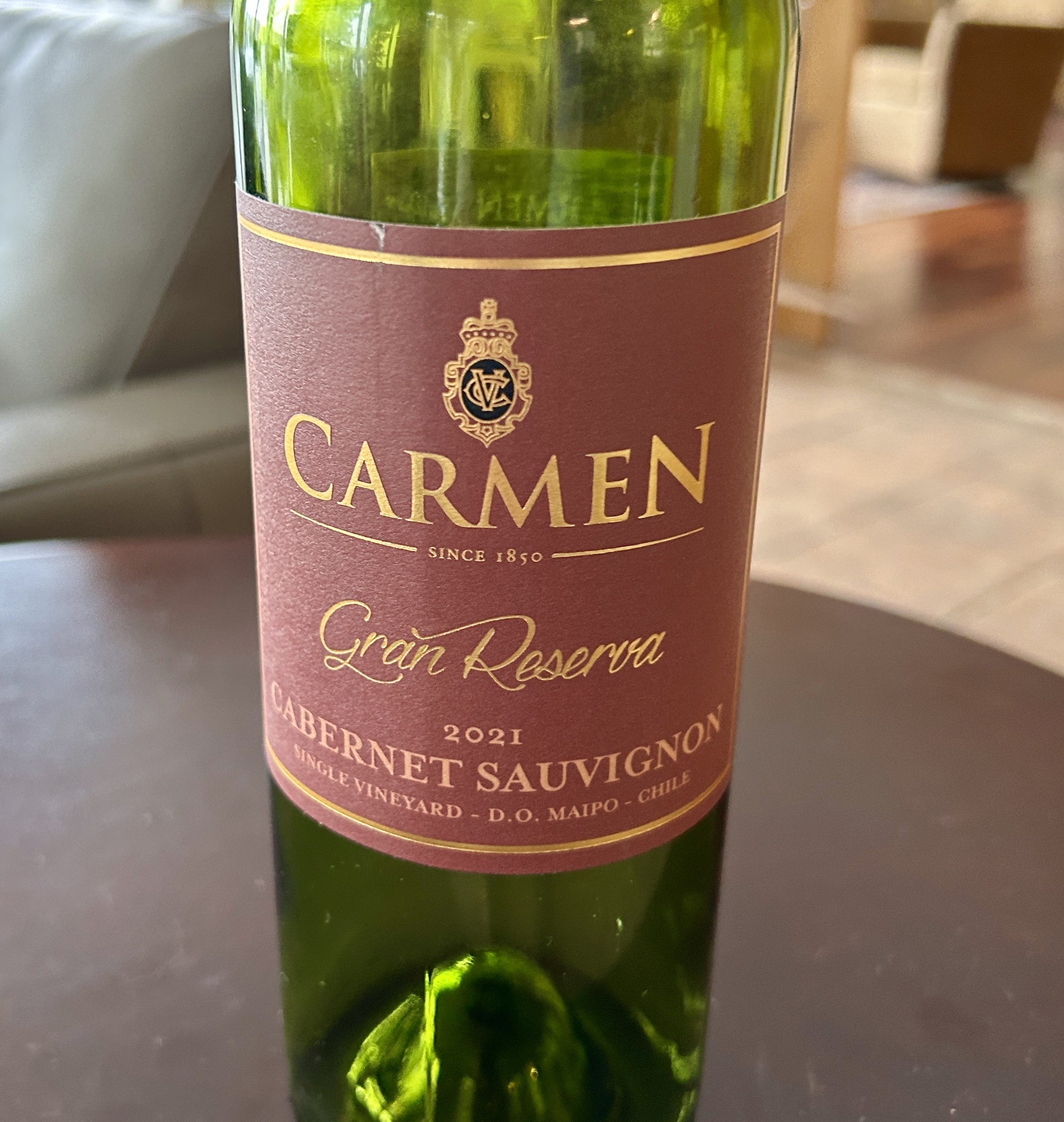
Most of the major Chilean wineries got their starts in the late 1800’s including Vina Santa Rita which we will be visiting today. As of 2024 there are over 800 wineries in Chile employing over 100,000 people. Chile is the largest wine producer in Latin America making over 22 million hectoliters of wine annually. FYI a hectoliter is just a fancy term used in the wine and beer industry for 100 liters. That is about the same amount that Australia produces and about half what the United States does.
In terms of quality, there are over twenty different wine regions in Chile and some are recognized as having among the best terroir on the planet. Especially esteemed are the cabernet sauvignons of the Maipo Valley, the carmenère of the Colchagua Valley and the syrahs of the Elqui Valley. What makes quality Chilean wines different from most European, American and Australian wines is that they are much cheaper to buy. In my first post from Chile our guide, Chris Whatmore took us to his favourite wine store and we were amazed at how affordable were some of the really good wines. Truth be told we never had a poor bottle of wine on the entire Chile trip and never paid more than $25 CDN for one.
So now that I’ve talked up Chilean wines let’s head to Vina Santa Rita for a tasting.
Vina Santa Rita
Vina Santa Rita was founded in 1880 by Don Domingo Concha, a prominent Chilean businessman who brought over from France not only varieties of French grapes, but also French winemakers and what at the time were cutting edge equipment and ideas to create the first large scale winery in Chile. It is located just south of Santiago in what is known as ‘The Bordeaux of Chile’, the Maipo Valley, famed for its cabernet sauvignon. Along with Santa Rita it is also home to Concha y Toro and Unduragga which are both well known names in Canada and the US.
Vina Santa Rita has a distinction that no other winery in Chile can boast – a major connection to the Chilean independence movement. The hacienda where the wine making first took place in 1880 has a history that goes back much earlier than that. Chile made its first moves towards independence in 1810 and for a few years, with Spain being under the control of Napoleon and unable to provide enough troops to oppose the rebels, it looked like they might succeed. However in 1814 Spain was able to send enough troops south from Peru to rout the rebels at the Battle of Rancagua and send the survivors, including Bernardo O’Higgins their leader, fleeing. Legend has it that 120 of them managed to hole up in the cellars of the this hacienda from where they eventually made their way to Argentina from where they returned ion 1817 to finally liberate the country for good. The tour of the winery includes a visit to the very rooms where these events took place.
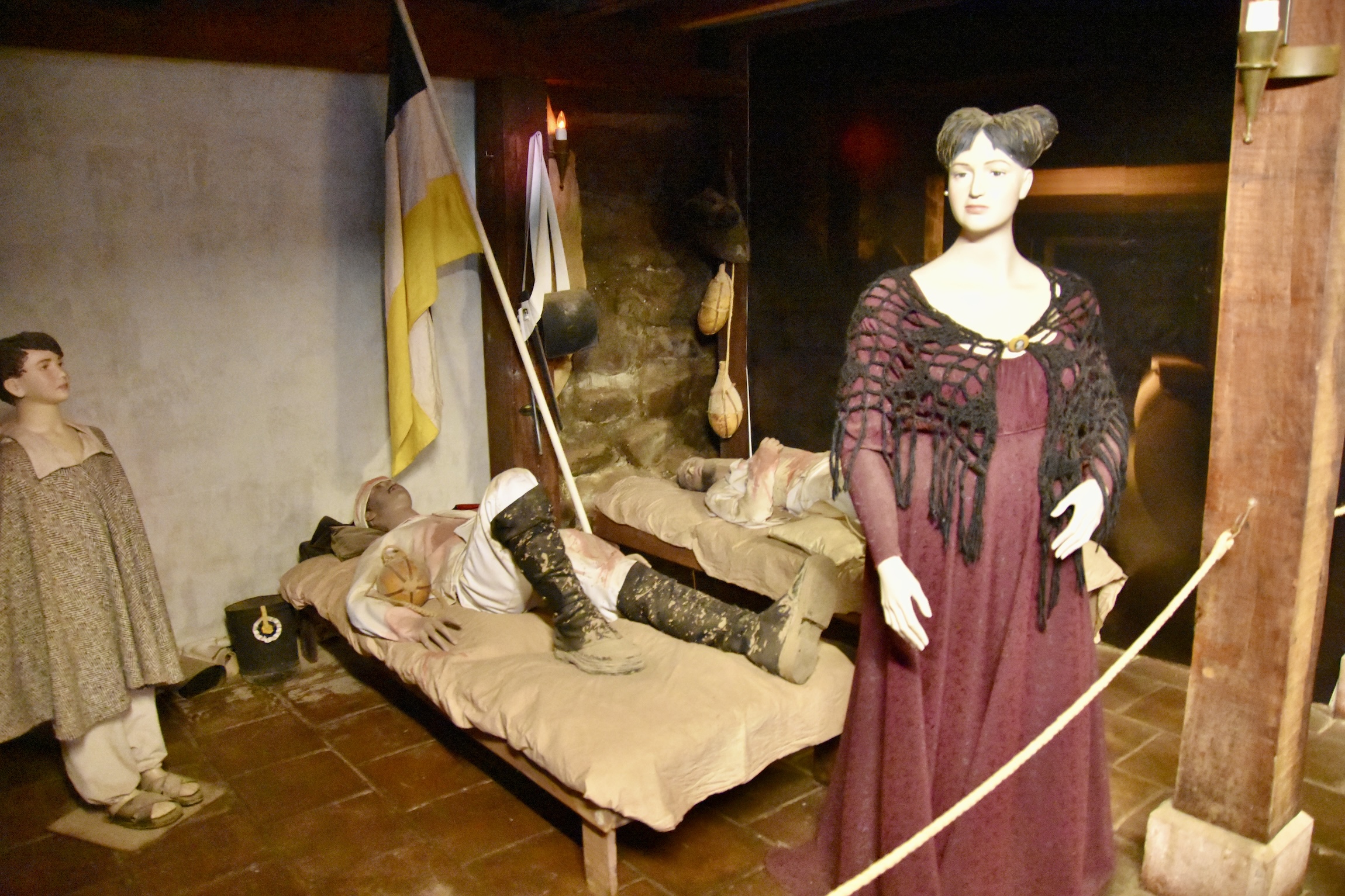
In commemoration of this momentous occasion, in 1982 Vina Santa Rita launched its signature 120 wines which are its most well known brand and sold around the world. I have had many bottles of Vina Santa Rita 120 over the years, but until the visit today I had no idea what the number represented.
The Maipo Valley is bounded on the east by the Andes and on the west by the smaller coastal range which we see as we walk from the parking lot to the visitor’s entrance where we will be taken on a guided tour. I am struck by the similarity of the landscape of that of Napa and Sonoma in California.
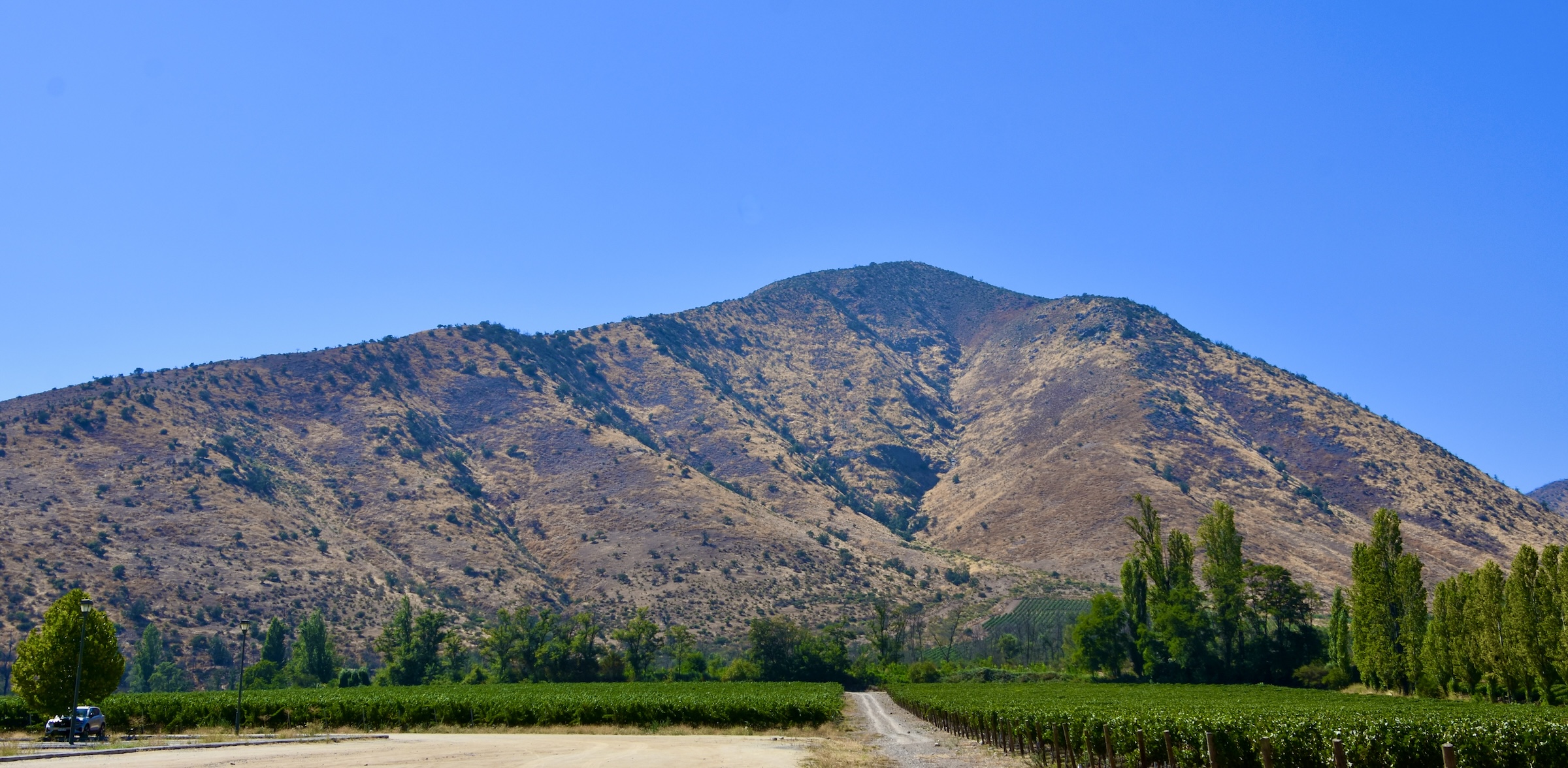
Vina Santa Rita has remnants of its original wine making machinery on display including this very weird looking thing which at first I assumed to be some type of steam driven tractor, but then realized it has no steering mechanism or place for a driver. If any readers know what the hell this is please let me know.
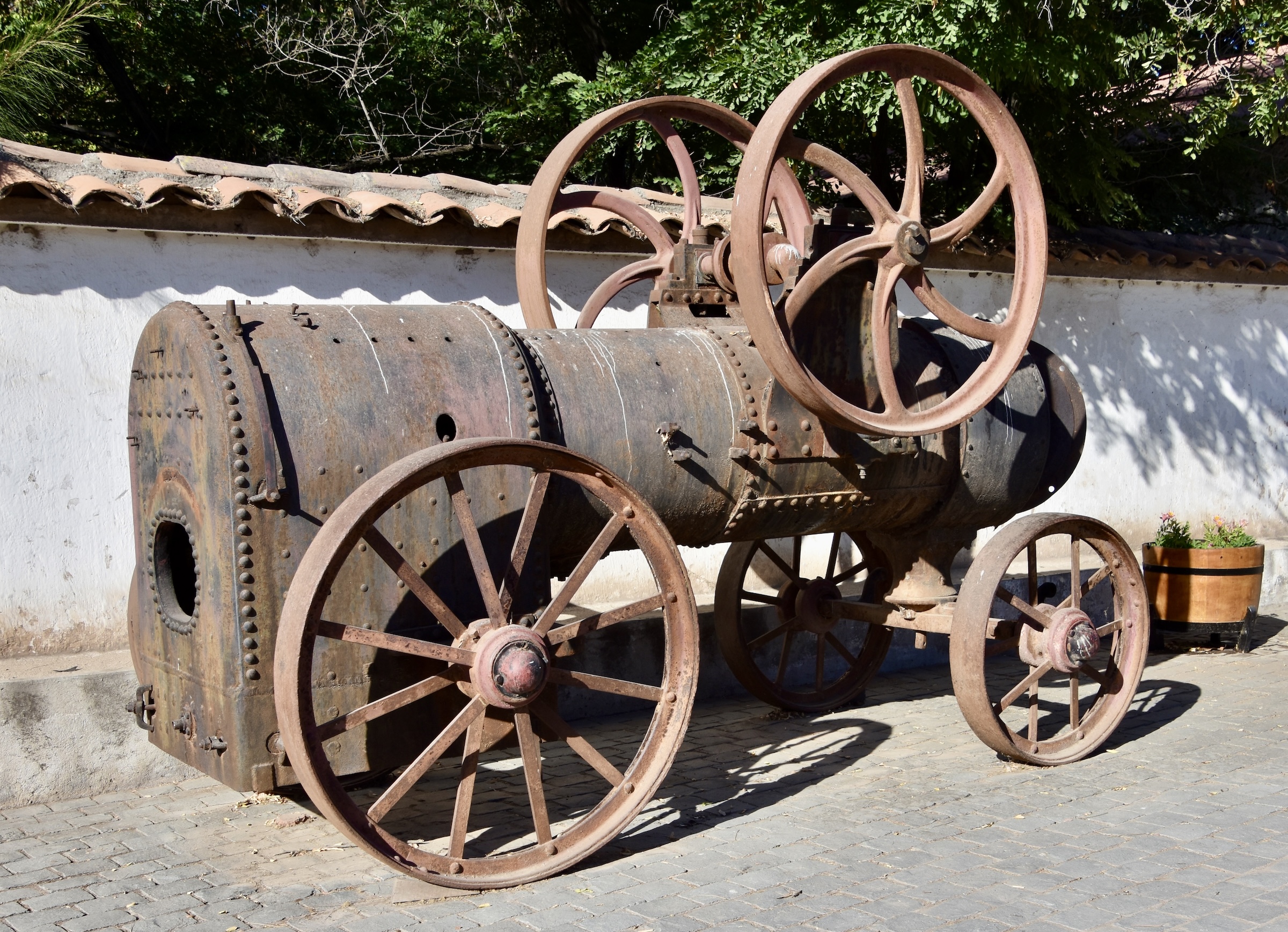
This is our Vina Santa Rita guide Pepe who starts the tour at a demonstration site where many of the varieties of grapes that are grown in the Maipo Valley are planted side by side.
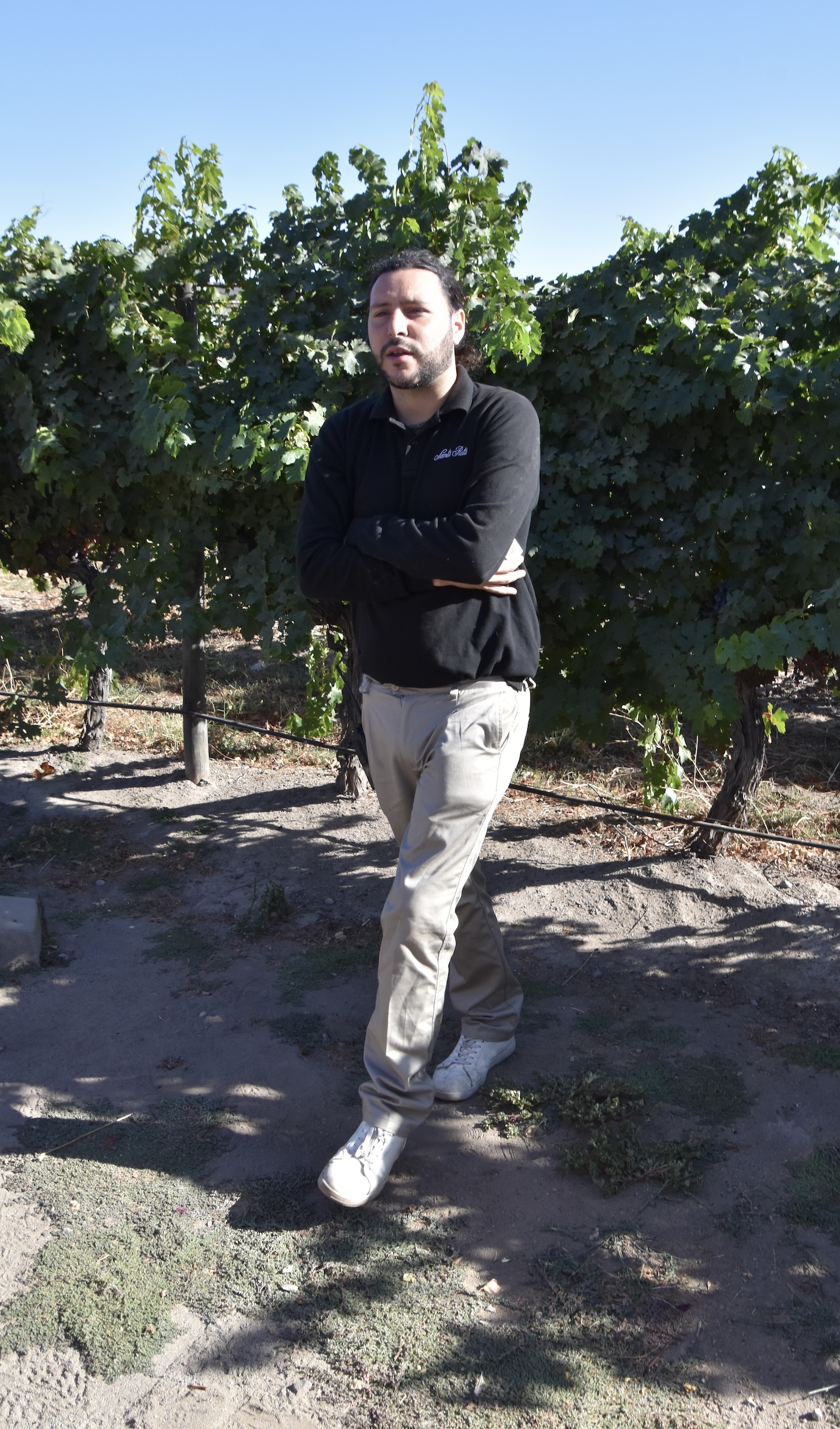
These beautiful looking grapes are cabernet franc which is actually the parent grape of cabernet sauvignon, merlot and carmenère and most often used to blend with these other Bordeaux origin grapes.
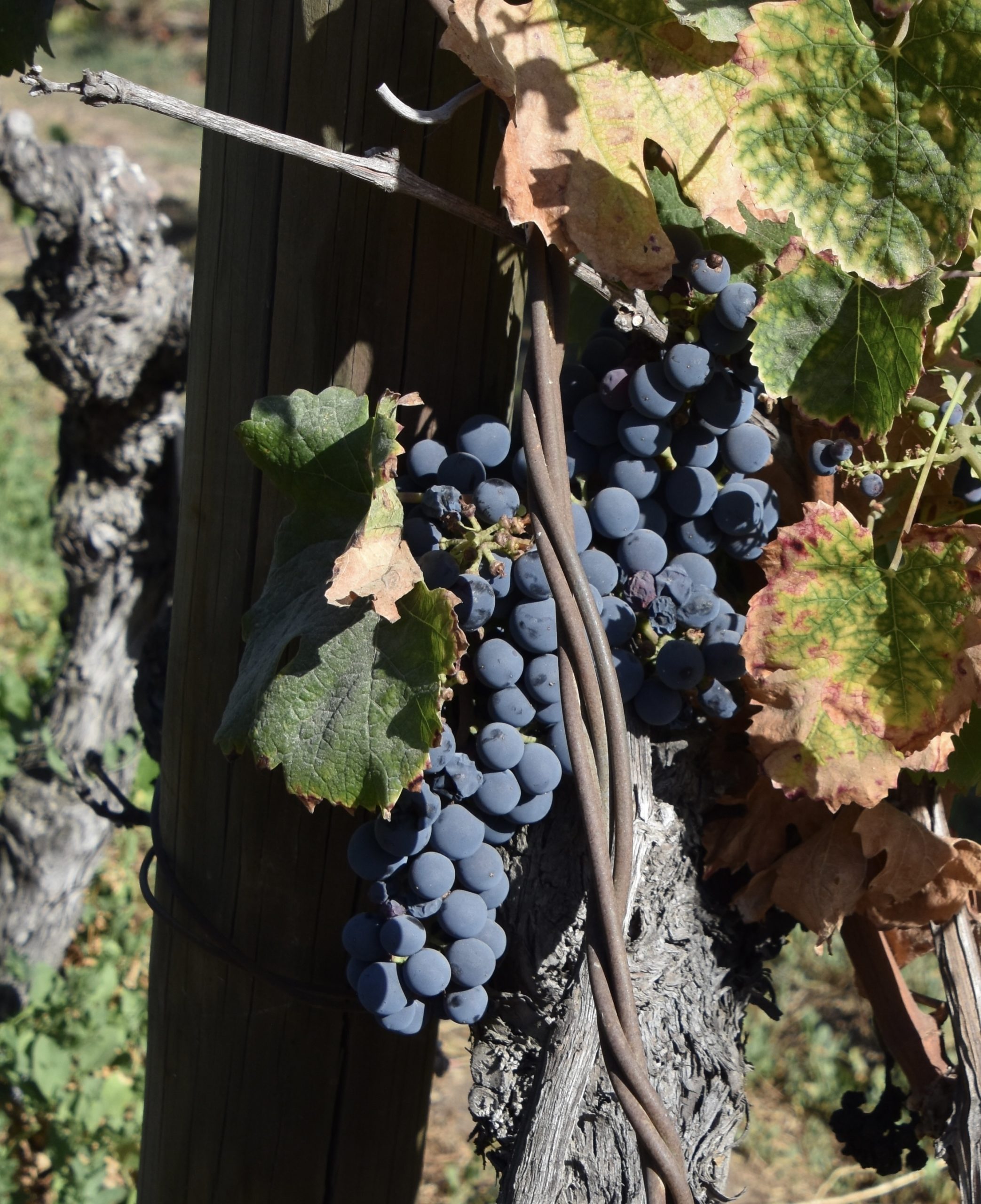
During our conversation with Pepe we learn that Canada is Vina Santa Rita’s largest North American customer which explains why its wines are so well known and popular back home.
This is the original wine cellar and the place where the 120 took shelter in 1814.
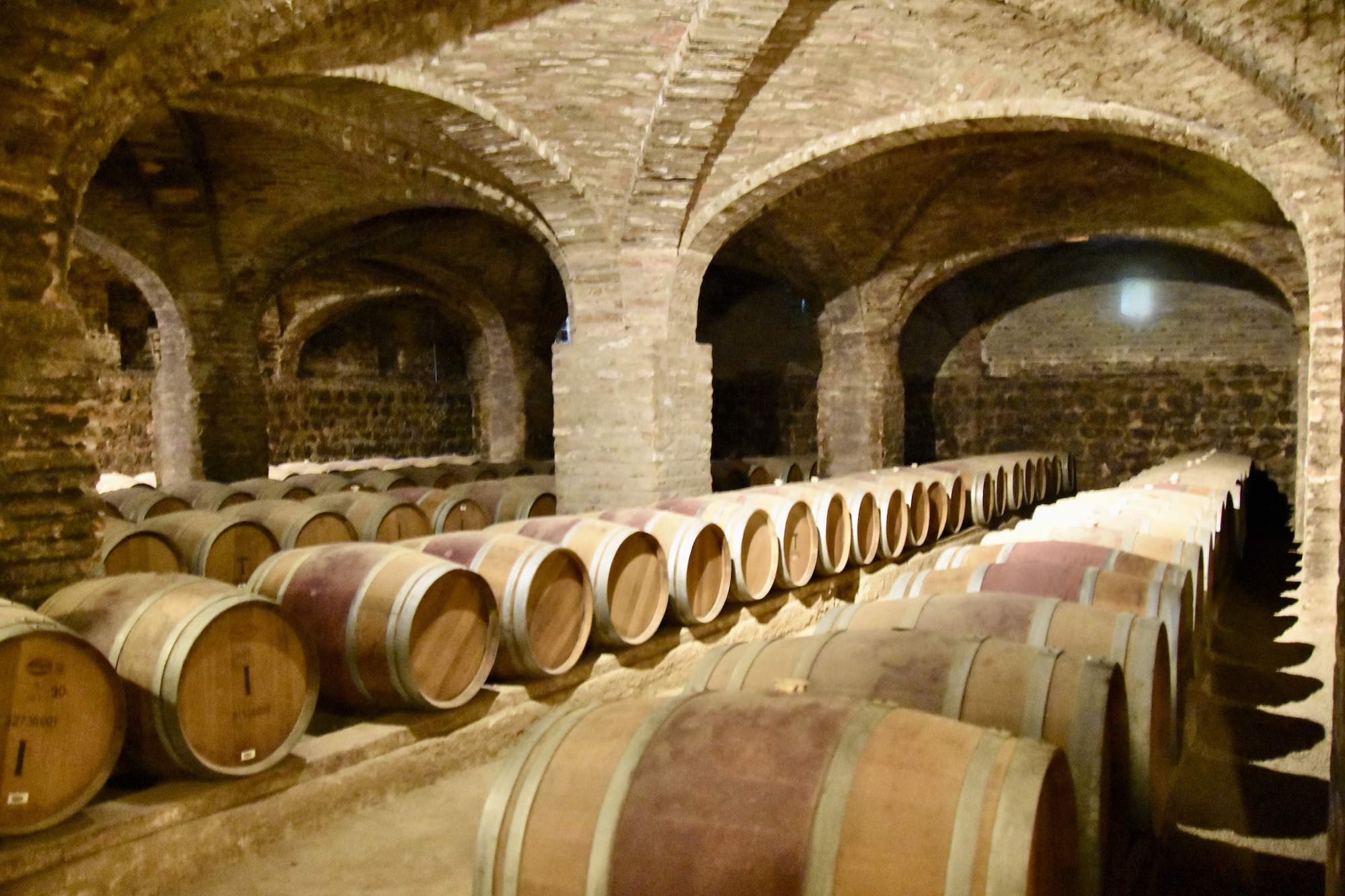
After touring the winery our group is ushered into the gardens area where a wine tasting has been prepared. One of things I like about visiting wineries is that they almost always have lovely gardens.
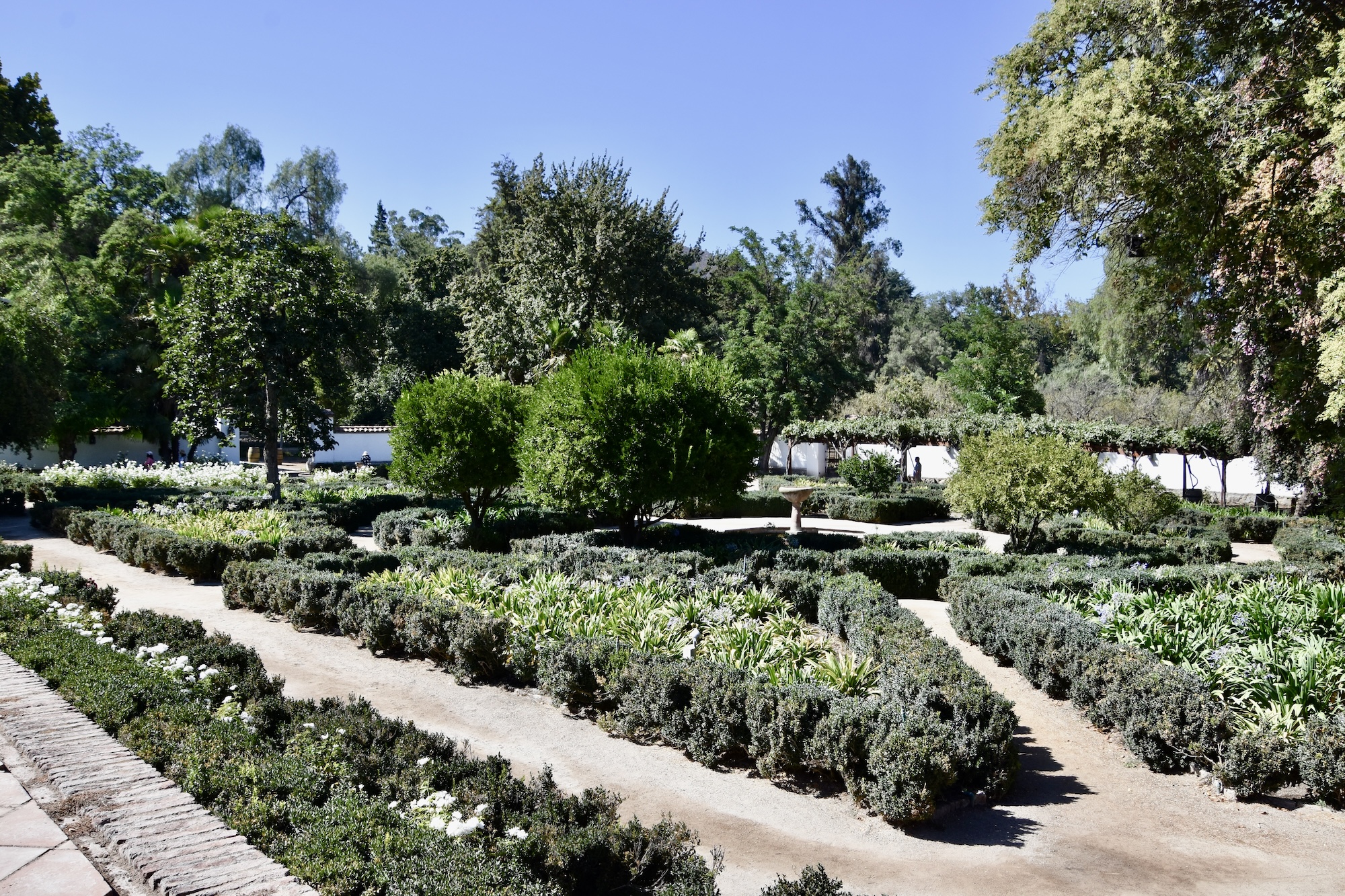
There are three Vina Santa Rita wines for the tasting, starting with a 120 Sauvignon Blanc followed by a Medalla Real Gran Reserva Carmenère and concluding with a Casa Real Cabernet Sauvignon.
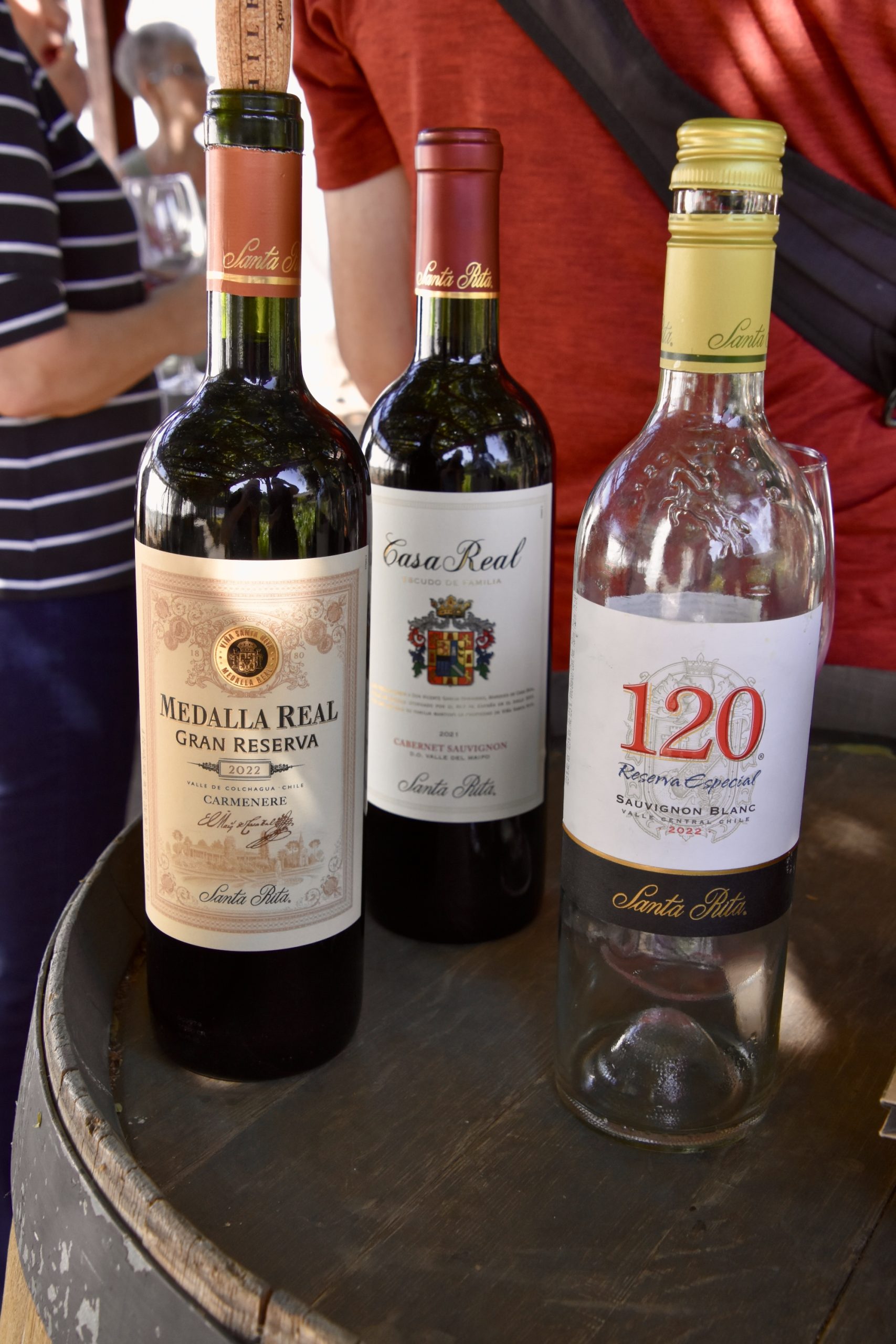
They are all excellent with the cab being really special.
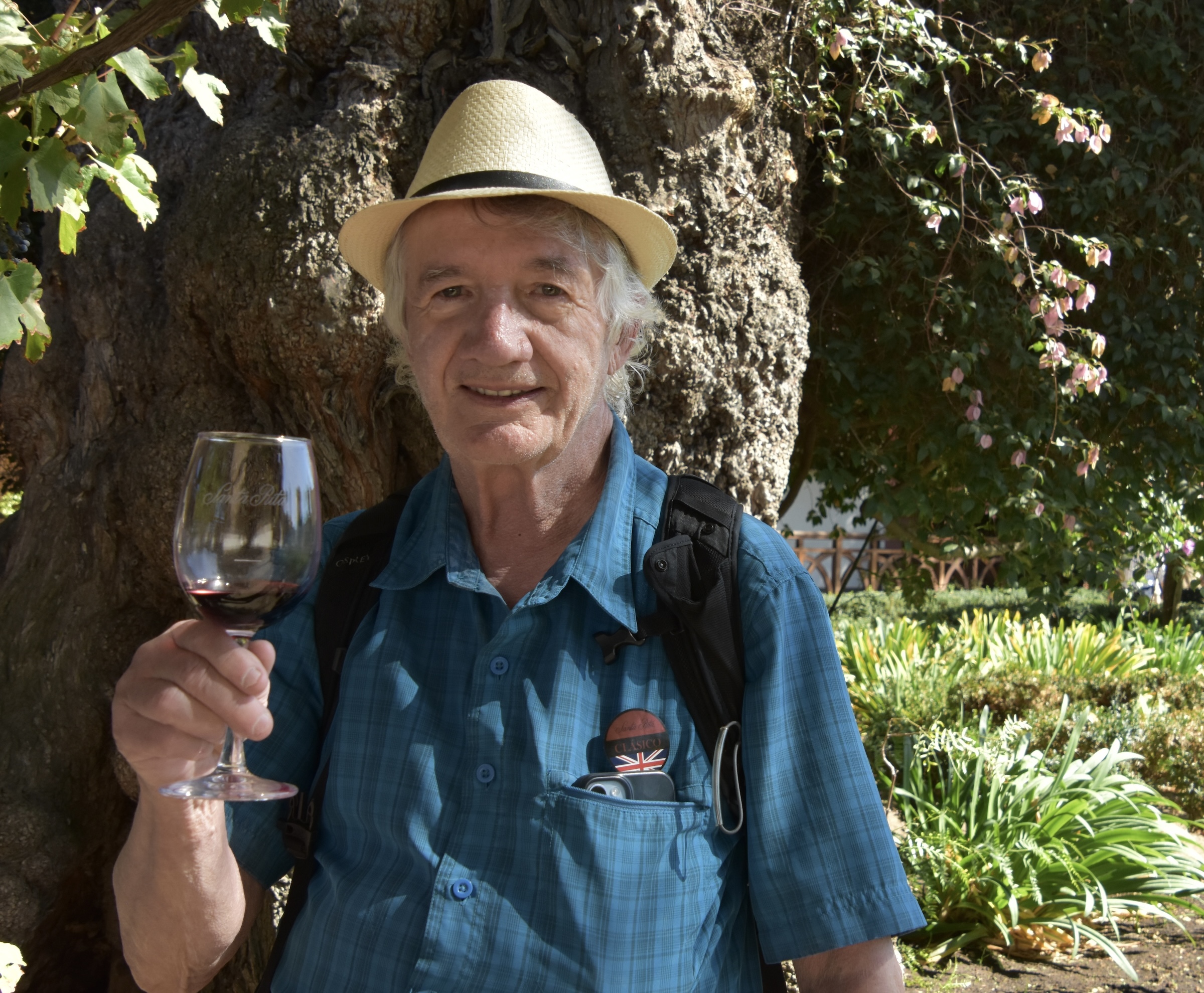
After the wine tasting we have a chance to do a little shopping in the Vina Santa Rita wine store before heading back to Santiago.
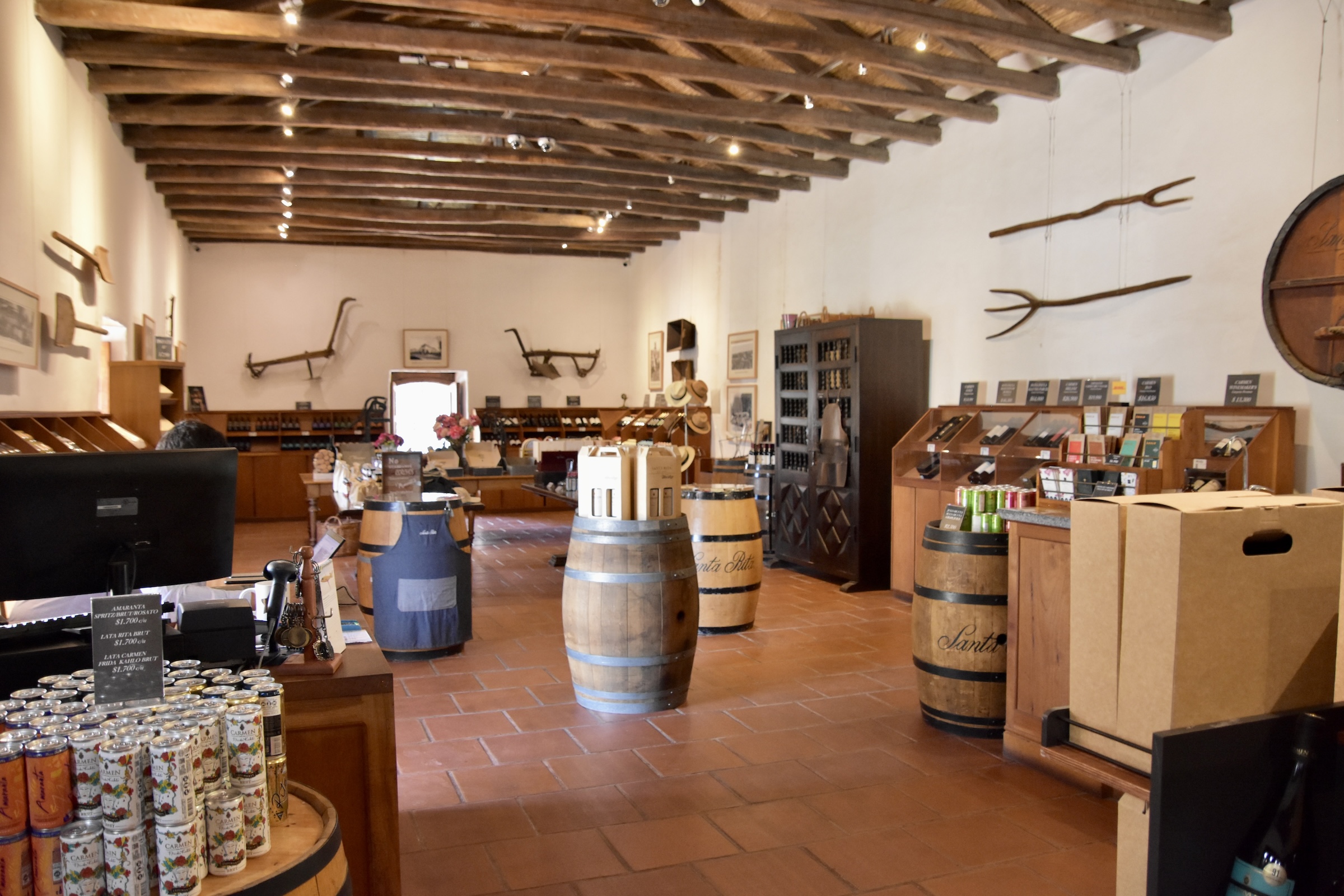
I suppose that this is as good a time as any to reveal that our AA guide Chris is an addict. He is addicted to empanadas and has to have at least one a day or he will get the heebie jeebies. There is an empanada joint almost directly across from the entrance to Vina Santa Rita and Chris has the driver stop and generously offers to buy us all one.
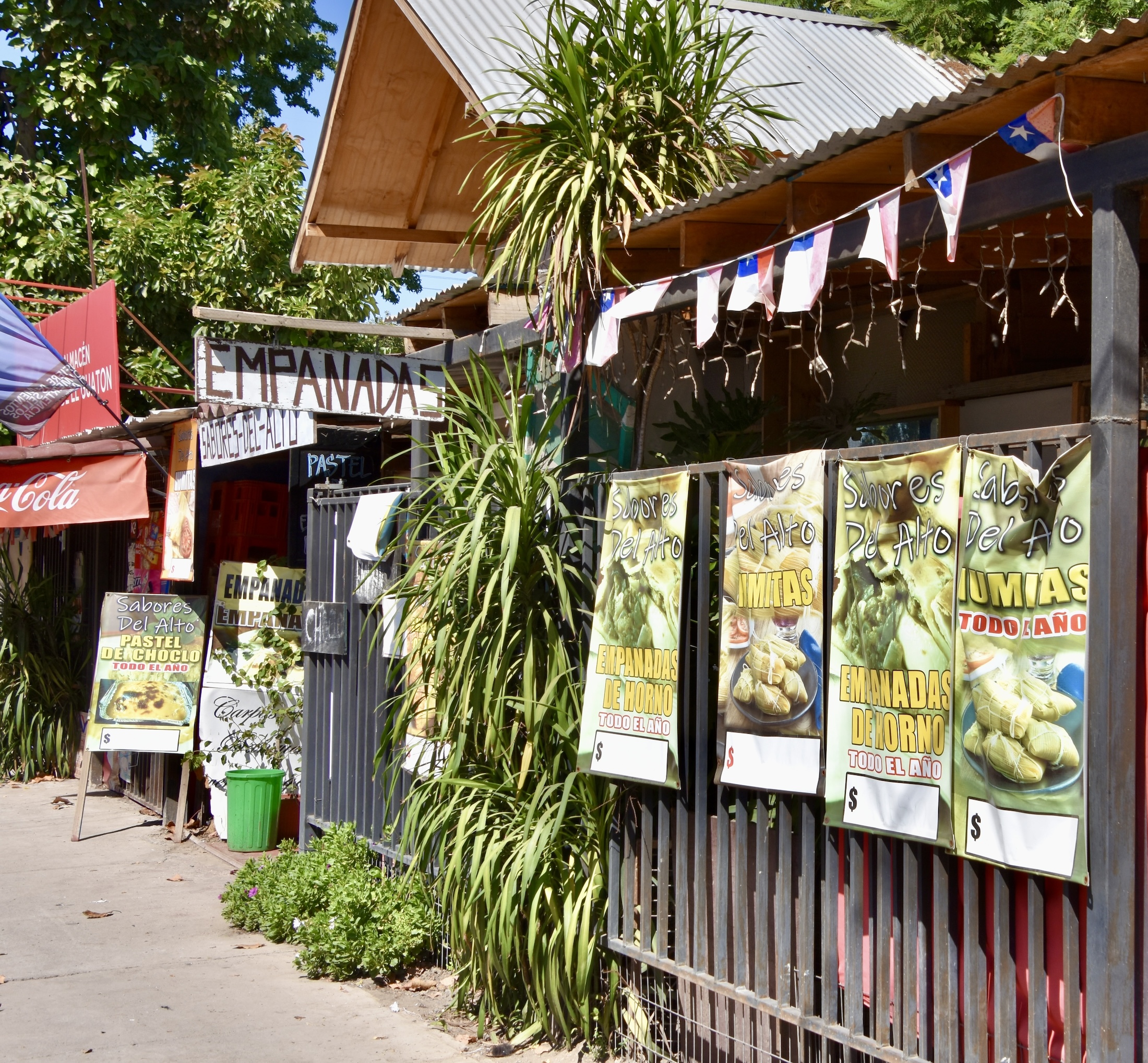
I follow him into the place where these fantastic smelling empanadas are just coming out of the oven. I have to confess that I was not really an empanada fan before this trip to Chile – they always seemed too dried out and doughy for me. But getting them fresh out of the oven or the fryer changed my mind and now I have great sympathy for Chris’ addiction. I hope he never gets cured.
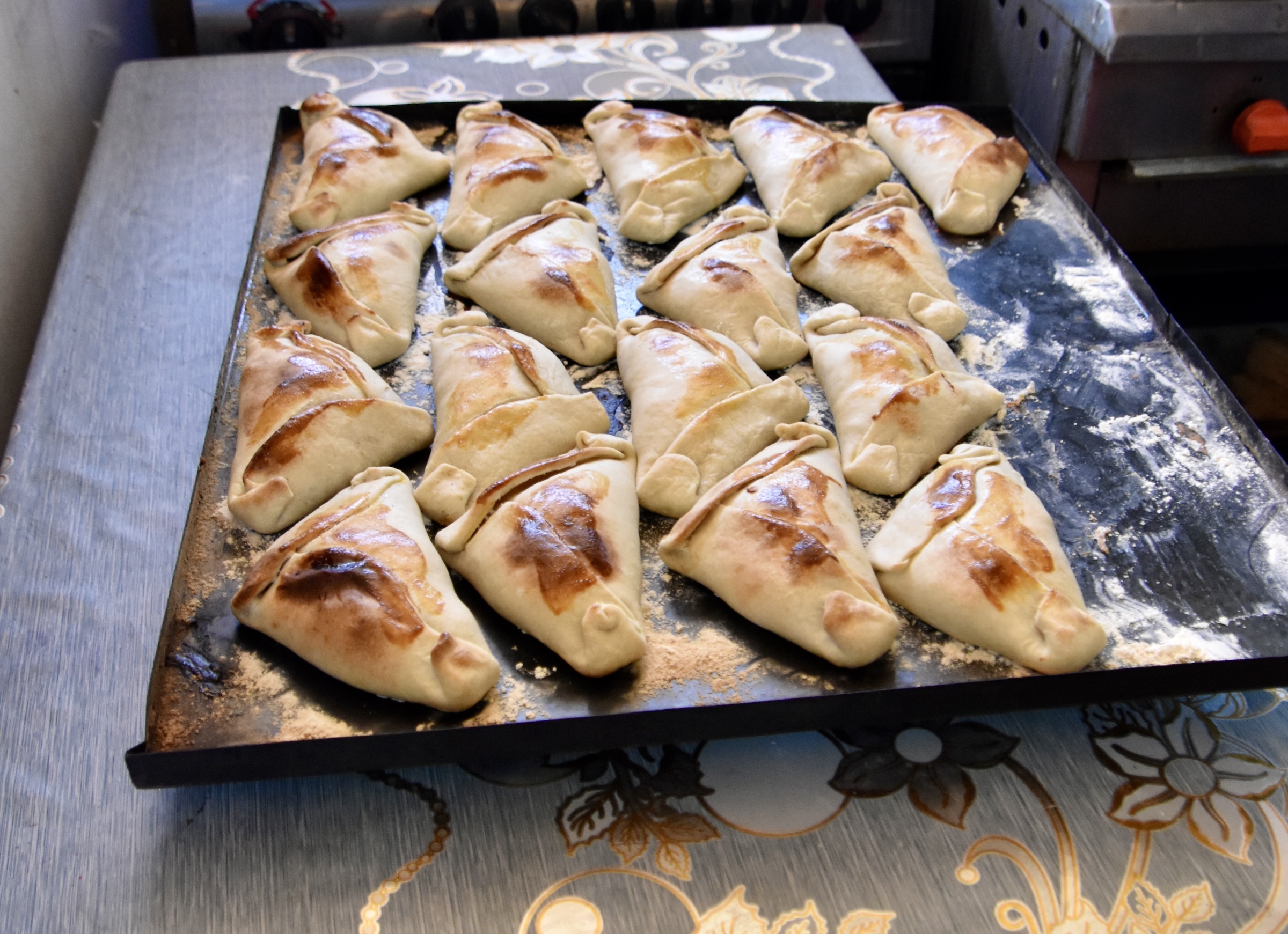
In the next post we’ll leave central Chile and fly to Punta Arenas where we will begin our exploration of Patagonia. It’s something I’ve been looking forward to all my life and I’m going to crack open one of those bottles of Vina Santa Rita cab I just bought to celebrate.

